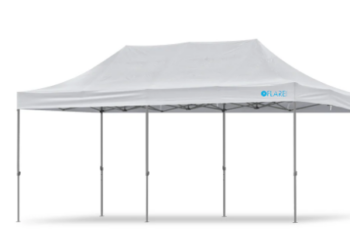Businesses use employee uniforms for lots of reasons, such as brand building and company pride. Uniforms can even help improve productivity. Of course, creating an employee uniform policy is often easier than creating an awesome employee uniform in the first place.
Almost anyone can think of a terrible employee uniform they saw some poor retail workers in at some point. If you want to reap the benefits of using an employee uniform, you must start with a good design.
Not sure how you go about designing a good uniform? Keep reading for our guide on making a uniform that helps your business and won’t make your employees cringe.
Talk with Your Employees
It’s almost always a good idea to communicate with your employees when a change is on the horizon. Open communication helps you secure buy-in and lets you explain the reasoning for the change.
Since your employees will wear the uniform, it’s almost more important that you get at least some input from them. Saddling employees with universally-despised uniforms will prove bad for morale and productivity.
In a small business, you can typically solicit input during a staff meeting. Ask employees for their thoughts on materials and cuts.
While polyester might come cheaper, it’s not always ideal if your employees work in a warm space. Your employees might show an overwhelming preference for cotton or at least a poly/cotton blend. At the very least, asking employees for input will mean less resistance when the uniforms arrive.
Color Selection
You can get shirts and even entire uniforms in most colors and even color combos. Yet, while almost any color is a possibility, you generally want colors that closely mimic your brand colors. This helps reinforce the brand for customers and, to some extent, for employees as well.
Of course, this can also prove a source of resistance with employees as well. Let’s say that your main brand color is yellow.
A lot of people look sickly in any shade of yellow. It’s just a matter of their skin tone and employees can’t do much about that. If you stick employees in a color that makes them look unhealthy, you can expect a lot of unhappy grumbling.
In cases where your main brand color is also a color that most people can’t wear well, try to opt for a secondary brand color or a neutral color. You can always brand the shirts in another way, which we’ll cover next.
Logo
Odds are high that if you’re thinking about uniforms, you already developed a logo. If not, you should take the time and settle on a logo design. That design can go on anything from letterhead and business cards to billboards and, yes, employee uniforms.
A good logo acts like a visual cue that reinforces the business or brand in customers’ minds. Plus, it’s often easier for casual customers to identify a brand by a highly recognizable logo than by the brand or business name.
Many business owners include the logo on the uniform as part of their marketing efforts. In cases where you might avoid the main brand color, though, the logo serves the more important function of subtly reinforcing the brand where colors might otherwise do the job.
Name Badges
Again, most businesses include name badges as part of the required employee attire. In fact, many businesses include the name badge in their dress code policy as a reason for demerits or even dismissal should an employee forget.
You can always opt for basic name badges that are square or rectangular. Some businesses opt for engraved name badges, while others simply apply a sticker to the badge with the employee name printed on it. For more security-sensitive companies, employees may need photo badges simply to enter the facility.
If you haven’t settled on a type of name badge yet, you can check out these custom name badges for ideas about what you might like or need. Your industry will likely play a role in your decision about name badges.
In a high turnover industry, for example, you’ll likely want badges that you can easily reuse. In a business with very low turnover, you may opt for engraved name badges since the employees will likely use those badges for years.
Industry Considerations
You must also give some thought to how your business or brand is positioned in the market. If your brand caters to a higher-income crowd, cheap polyester uniforms can send a mixed signal to your customers. If your brand caters to a lower-income crowd, expensive uniforms may send a message to your customers that you prefer more affluent customers.
You must also evaluate the overall expected wear and tear on the uniforms. If your employees will face a lot of dirt, grease, or grime, they may resent it if they must wear their personal clothing — like pants — to work every day. In those cases, you may want a full uniform rather than simply a uniform shirt.
This spares employees the cost of replacing ruined personal clothes and can reduce complaints. It also lets you select materials that give you the best employee uniform for the expected wear and tear in the workplace. While cotton or polyester might work fine in a big box store, an auto repair shop might go with canvas for enhanced durability.
Building Your Employee Uniform
Designing a good employee uniform means more than just picking a shirt from a catalog or website. You must consider a wide range of factors, including employee buy-in, brand consistency, and even fabric selection.
You must also take into account your business’ or brand’s positioning in the market. The overall quality of the uniform can send messages you don’t intend to your customers. Aim too high or too low and you can accidentally alienate your customer base, if only subconsciously.
Looking for more ways to expand your business know-how? Take a look in our Business section for more articles.






